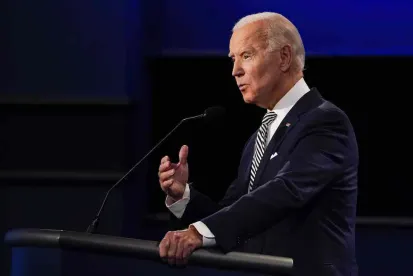President Biden has signed his long-awaited Executive Order on digital assets (“Executive Order”). The Executive Order, titled Ensuring Responsible Development of Digital Assets, does not announce any new regulations for the digital asset industry. Instead, the Executive Order mandates federal agencies to take a unified approach to developing specific policy recommendations for a comprehensive regulatory framework for digital assets. The mandates also include a directive to the Secretary of the Treasury to lead an effort to explore the United States issuing its own Central Bank Digital Currency (“CBDC”), often referred to as the “digital dollar.” While some commentators have suggested that the EO is “ground that has been trod before”—cross-agency cooperation and the exploration of a CBDC—Senior Administration Officials were quick to point that while it is true that these issues have been explored at length, the EO is “a way to organize [the government] with urgency so that [the government has] a coherent and coordinated view on digital assets and that it’s articulated at the very highest level of our government.” Industry executives and other commentators have called the EO a “watershed moment” due to its breadth and effort to address the digital asset market as a whole.
The Executive Order itself recognizes the “dramatic growth” in the digital asset market, expressly noting the space reached a “market capitalization of $3 trillion” earlier this year. While indicating that “many laws involving digital assets are within the scope of existing laws and regulations,” the Executive Order makes clear that there is the need for “evolution and alignment of the United States government approach to digital assets.” The Executive Order lays out six “principal policy objectives” that agencies must consider in developing their mandated policy recommendations: (1) consumer and investor protection; (2) stability of the United States and global financial systems; (3) mitigating illicit finance and national security risks; (4) reinforcing leadership of the United States in the global financial system and technological and economic competitiveness; (5) ensuring access to safe and affordable financial services; and (6) supporting technological advances that promote responsible development of digital assets, expressly noting a concern for “negative climate impacts and environmental pollution” from cryptocurrency mining.
Senior Administration Officials noted on the background press call that “this executive order seeks to promote digital asset innovation while balancing their benefits and associated risks.” The Executive Order specifically points to the need for sufficient oversight to protect sensitive financial data of consumers and to guard against cybersecurity failures at major digital asset exchanges and trading platforms, which the Executive Order recognizes have already “resulted in billions of dollars in losses.” The Executive Order also details that a cohesive regulatory approach is needed to mitigate the illicit use of digital assets, including money laundering, cybercrime, and ransomware, and the use of digital assets to circumvent domestic and international financial sanctions regimes.
The Executive Order lays out a number of dates by which different agencies must take specific actions. By June 7, 2022, the Attorney General must report on how to strengthen international law enforcement cooperation for detecting and investigating criminal activity involving digital assets. By July 7, 2022, the Treasury Department must establish a framework for interagency international engagement on adopting global principles for use and adoption of digital assets, with a report due on that group’s priority actions under this framework by March 9, 2023. A number of reports are due by September 5, 2022, including a report by the Treasury Department on the potential implications of a United States CBDC, a report by the Treasury Department on the implications of adoption of digital assets on financial market and payment systems for United States consumers and investors, a report by the Office of Science and Technology Policy on the technological infrastructure that would be needed for the adoption of a United States CBDC, and a report by the Office of Science and Technology on the potential benefits and drawbacks of distributed ledger technology on the environment. And by October 5, 2022 the Treasury Department in conjunction with the Financial Stability Oversight Council must report on the specific financial stability risks and regulatory gaps posed by digital assets and recommendations to address such risks.
Between this Executive Order and the Department of Justice’s formation of the National Crypto Enforcement Team (“NCET”), the government is showing keen interest in digital asset businesses and platforms. To be sure, this Executive Order is a good first step in the government’s efforts to provide certainty, uniformity, and transparency in the regulatory framework for digital assets. Still, many questions remain. For example, will the government’s regulatory approach seek to bolster and enhance the unique and positive aspects of digital assets, or will it approach digital assets from a traditional financial system point of view with business as usual regulations that are not tailored to digital assets themselves, resulting in “more-of-the-same” regulations that fail to account for innovation and experimentation and the promise of digital assets and decentralized finance.
All forms of digital asset-related businesses, including DApps, DAOs and web3 protocols, should be focused on the Executive Order’s output to ensure that they are ahead of the government’s version of a workable regulatory framework.







 />i
/>i

